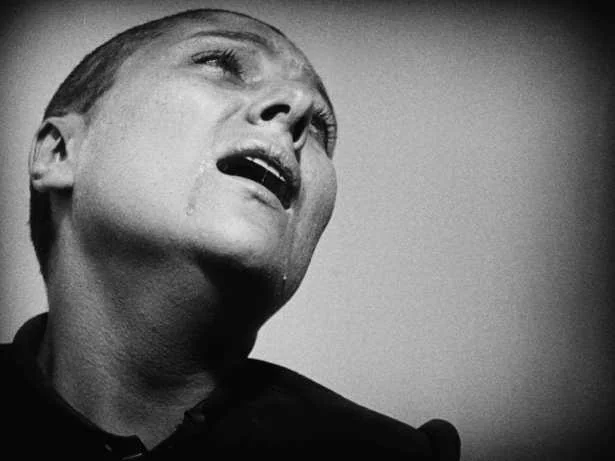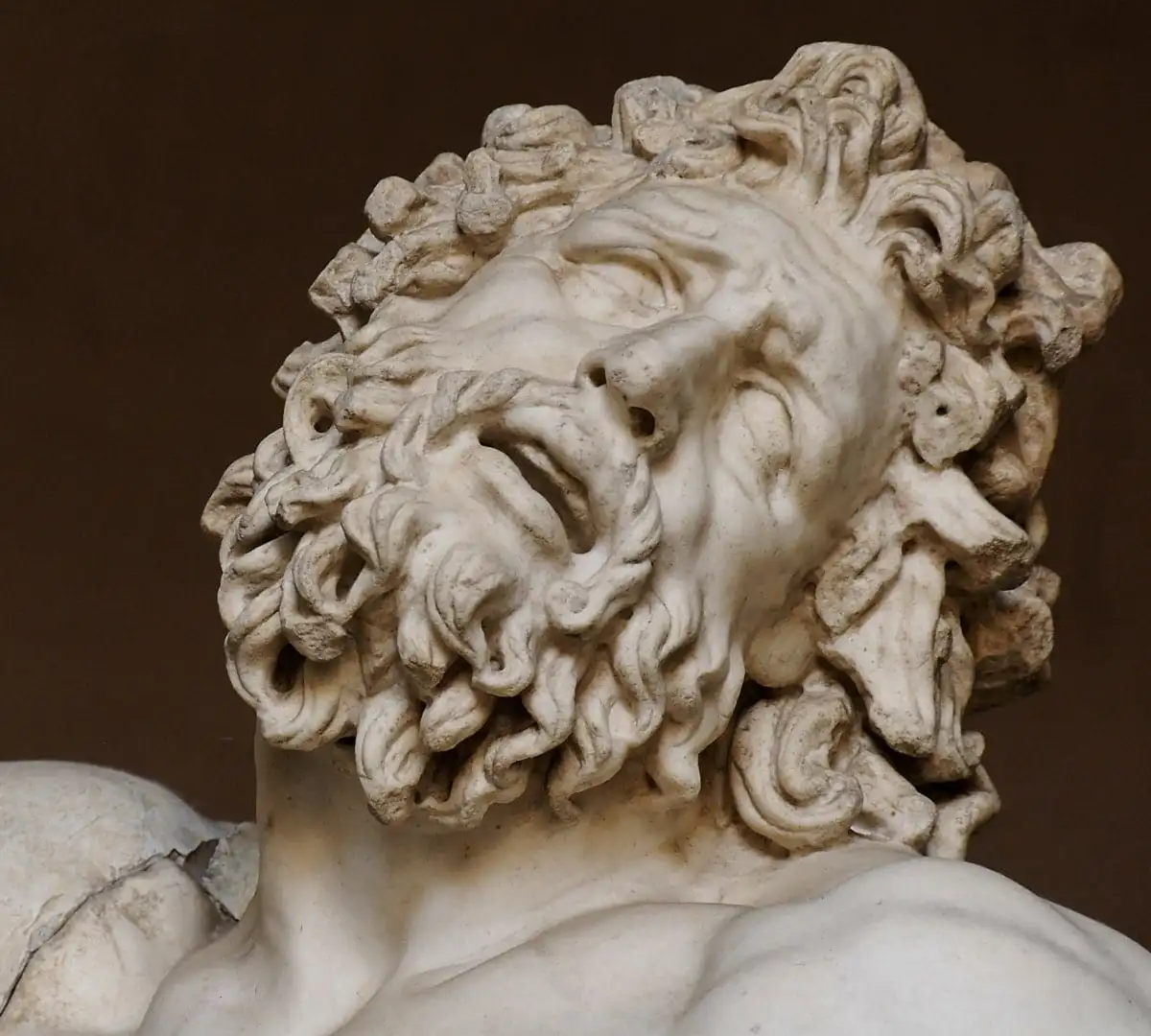The Woman's Picture: In Search of Falconetti
- Eve O'Dea
- Feb 1, 2024
- 7 min read
Updated: Mar 2
“You cannot know the history of silent film unless you know the face of Renée Maria Falconetti” - Roger Ebert
When a film is lost, as so many of the silent era have been, one of two things can happen to it's star: they disappear alongside the film into historical obscurity, or, their rarity becomes integral to their stardom. Consider Theda Bara, the great vamp of early cinema so closely identified with Cleopatra, despite the film in which she starred as the titular Egyptian queen having been almost totally destroyed. We have so little footage of Bara, and what biographical information we have about her is tainted by intentional misinformation and rumour. Thus, her persona of mystery becomes all the more realized. She is perhaps more recognizable as a cultural icon now than she ever would have been if her filmography existed in its entirety. What makes these silent film stars so enigmatic and attractive, even more so than their golden age counterparts, is their unknowability. Their cinematic images are rare and sacred, we have no record of their voice, few pictures of them outside of their on-screen appearances. They exist as unplaceable entities, like gods of the ancient world whose names went unuttered for fear of spoiling the mysteries.

Maria Falconetti’s is a special case. She possesses that splendid aura of unknowable mystery despite the fact that her entire filmographic output is present and accounted for. It helps, of course, that she only made one film in her lifetime, that being the 1928 masterpiece La Passion de Jeanne d’Arc. Even for this, we must thank our lucky stars. The film, as director Carl Theodor Dreyer had originally intended it, was missing for some time. This was in large part due to the controversy and poor financial performance that met the film upon it's release. To appease government and clerical censors, Dreyer butchered his film so as to not raise any further objections. The original cut was thought to have been lost in a series of all too familiar film warehouse fires, only to be rediscovered intact at a Norwegian psychiatric hospital in 1981. What we have now is the cinematic equivalent of a holy relic, the rare remains of a venerated figure that inspire worship of an almost religious nature.
We know so little of Falconetti that can be definitively confirmed. Much of it is based on repeated guesswork and assumptions that eventually turn into something resembling fact. Even her name is hard to pin down; I have seen her referred to by multiple variations, such as: Maria, Renée Jeanne, Marie, Renée Maria, or simply Falconetti. Her life cannot be neatly laid out on a timeline, where one event informs the next. She appears to come from nowhere, make an indelible mark on the history of cinema, and once again fade back into the darkness. From the perspective of the filmgoer, she almost does not exist outside of Joan.
The patron saint of cinema was born in Pantin, a commune just outside of Paris, in 1892. We know that she had a successful career as a stage actress from the First World War onwards, and specialized in “light comedies''. It is oft repeated that Dreyer “discovered” her during her performance of La Garçonne (The Tomboy) an at-the-time scandalous piece of literature which challenges the constructs of gender and sexuality for women in the 1920’s. Perhaps it was because of this role’s non-traditional portrayal of gender that Dreyer thought her to be the perfect actress to play one of the most famous cases of gender nonconformity in history. Still, she was an odd choice. She had little to no on-camera experience, and by 1928 was in her mid-thirties, hardly an obvious stand-in for the nineteen-year-old Maid of Orléans.
And yet, by some miracle, it works.
What I experience when watching Falconetti is unlike anything else I have felt towards a film, silent or otherwise. She is nothing like the Joan we have seen in paintings and religious icons, which gave us a youthful, divinely feminine, blonde-tressed, fair girl, one who looks far too unscathed by the world in which she lives and the battlefields on which she fought. In fact, Falconetti’s age works to her advantage. She shows years of hardship and exhaustion, like a woman clinging desperately to life. She has dirt on her face and under her fingernails, and by the end of the film she carries herself like someone on the brink of starvation. One could write an entire book just about her face, that face so perfect for the screen. Her nose is undeniably gallic in its prominence, her cheeks are broad and flat. This is a masculine face, rejecting the exaggerated femininity typically adorned by screen actresses of the era. Dreyer totally disregarded the beauty standards of the time to instead present Joan as an eternal woman, unfettered by age, adornment, or typical representation of gender.
If it sounds like I am calling Falconetti anything but beautiful, I am doing her a great disservice. She has a face unlike any other on film, of her own era or ours. Her mask is one of plaster, reflecting a bright light of divinity. It is a face that harkens back to antiquity, to those monumental statues of gods, heroes, and the divinely punished. It reminds us of those fragmented pieces of marble kept in museums, whose vanished pigment leaves them with clear faces and eyes that reflect an infinite emptiness. Falconetti allows us to imagine what it would be like if those statues came to life, if suddenly those eyes had a soul. The rest of her is eerily still, like a painting you swear you saw move out of the corner of your eye. Falconetti’s beauty is not of any certain era. It is of the ancient world, of 15th-century France, of 1920’s cinema, of the modern era. It is timeless.
Aside from Falconetti's sublime talent, it would be neglectful not to acknowledge the surrounding factors which present her performance with such clarity. Dreyer, along with such names as Meliès, Griffith, Gance, and Keaton, demonstrated his understanding of the film camera as a uniquely artistic medium in itself, rather than a means to adapt theatre for the masses. More than any of his contemporaries, Dreyer was a master of the face, how to light them, how to capture a range of emotions in their subtle movements. Not just Falconetti’s visage, which Dreyer frames like the icon of a saint, but those of her accusers, the wrinkled, scarred, grimacing faces that loom over her like gargoyles. No one in this film gets the movie star treatment. There is no poreless skin, no kohl-lined eyes or cupid's-bow lips. Dreyer echoes the plain faces of his actors in his unadorned, stark set design. We know we are in 15th century France because we are told so, but nothing about this setting or costumes binds us to this time period. It is not anachronistic, it is atemporal, thus allowing Joan’s story to remain ageless. His camera moves around this set erratically, spatially disorientating the audience as Joan would have been in the unfriendly environment. Walls do not line up as they should, windows are all askew, a character may appear both miniature and giant in the same scene. Dreyer is a contemporary of Germany’s expressionist movement of filmmakers, who used high contrast and shadows to evoke unease, fear, and high emotion. Dreyer does the same thing, only with light.
Despite having the original version of the film back in our possession, I have not seen the film in the same way as a viewer would have in 1928. In his lifetime, Dreyer never settled definitively on the film's score that would be played by live musicians. Different scores were used during different periods, depending on when and where the film was showing, and musicians continue to write compositions to accompany the film to this day. To me, the musical accompaniment of Richard Einhorn’s Voices of Light (1994) is almost as essential to the viewing experience as the film's visuals. Says Einhorn, “What I wanted was a kind of a musical texture that floated outside of time, the way Joan of Arc’s story, for me, floats outside of time”. Using both Latin and Middle French texts from Joan’s lifetime, it is itself a revelation, a divinely inspired masterpiece that conveys the situation as historically grand and personally intimate. The audience, sitting in a dark theatre, may start to feel like they are at mass, not out of obligation, but out of devotion. It pulls faith out of its audience that may not have existed before. So convinced are we by the honesty of the filmmaking, the triumph of Falconetti’s performance, and the movement of the music that we have no choice but to believe this story completely. We are so trusting in Joan’s own faith that we feel it ourselves. As I watch the film, there is no doubt in my mind that she spoke to angels and was sent by God to defend her country.
The events of Falconetti’s life, both pre-and post-Joan, are frustrating for would-be biographers and historians, but add to her esoteric nature as an artistic figure. In an interview with Einhorn, Helène Falconetti, a daughter I didn’t know existed, briefly confirms some of her mother’s later life events. After Jeanne d'Arc, Falconetti returned to the theatre. Her tastes for drama were expensive, and she eventually bought her own theatre to produce the kinds of plays she wanted. But they were avant-garde, only intellectuals went to them, says Helène. Eventually, in the 1930’s, she left France for Switzerland, then set sail for the United States. Apparently, she was rejected by her American friends who would not help her emigrate, so she continued on to Argentina, where she lived in a French community in Buenos Aires. “And she died”, says Helène, matter of factly. From the way she narrates it, her own mother was someone she hardly knew as real person, as elusive a figure to her as she is to us.

The circumstances surrounding Falconetti’s death only add further mystery to her life story. We know she died in Buenos Aires on the 12th of December, 1946, at the age of 54. The exact cause of her death is debatable, as sources of varying reliability pin the blame on the mistreatment of her body. Allegedly, she became severely overweight in the 1940’s and began a restrictive diet with fatal results. Her death has been referred to as both a sudden bodily attack, or suicide by starvation. The latter, in particular, echoes stories of medieval martyrdom. Because we know so little of her as an actual person, and what images we do have are of her in an unmovable state of perfect ecstasy, it is hard to think of her in this way. I cannot quite wrap my head around her at the mercy of the corporeal world, vulnerable to bad habits or bodily indulgences. I would have been more willing to believe that her body was incorruptible.





















Comments